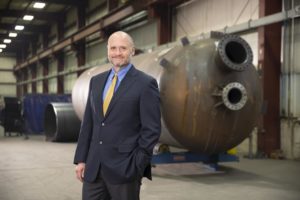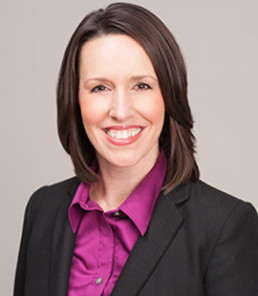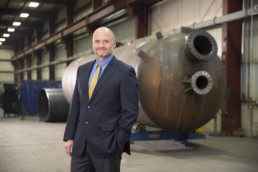Interview: Karen Chang, Senior Portfolio Asset Manager, Bloom Energy
We are inspired by people who are passionate about technology that solves pressing global challenges. Scaling and commercializing those solutions requires serious knowledge, courage, perseverance, and support systems like those who work in the insurance industry. In this interview series, our chief actuary, Sherry Huang, talks with friends of NER whose work makes a difference, and whose journeys will inspire you, too.
This interview has been lightly edited for clarity.

Karen is the senior portfolio asset manager for our client, Bloom Energy. Her team is responsible for managing a portion of Bloom’s large operating assets and coordinating efforts among multiple departments within the company.
I have been working with her team since I joined NER and have always been extremely impressed by Karen. We often ask detailed questions about the performance of our clients’ assets, and she consistently has well-documented answers for us. We connect at least quarterly for this diligence, and I regularly sense how proud she is of her team’s work, which makes us proud to work with them, too!
Karen, I understand you are a mechanical engineer by training. How did you decide to pursue engineering and how did you find your way to Bloom Energy?
I decided to pursue engineering because I was good at math in high school and thought having a specific skill would lead to more career certainty. My family all had business backgrounds and were initially not very supportive of my decision to pursue engineering in college. I started out studying electrical engineering but switched and graduated with a B.S. from UCLA in mechanical engineering.
My first job was an internship at NASA, through a partnership they had with CalTech at the time. Over time, I realized I did not want to do pure engineering work and ventured out to more operation strategy roles. A process improvement management consulting job brought me to Silicon Valley, and I ended up getting a job at Bloom Energy, which had the perfect dynamic that I was looking for.
Bloom Energy has grown so much and became a public company during your tenure there. How has your role changed during this time?
I’ve gained my experience within the same department since I joined Bloom, so my role hasn’t changed that much. However, the job itself is ever changing, and new projects are always exciting and challenging. I work at the intersection of engineering, process optimization, business operations and finance, so there is always a lot going on.
Despite being a public company, Bloom still has a flat structure compared to some of the places where I worked before. As a result, I can voice my suggestions and concerns easily, and decisions are made quickly around here.
Do you have a mentor who inspired you during your career?
A manager at Realization Technologies showed me what it is like to be a good team leader. Our team spent a lot of time together on the road with our consulting projects, and this manager led the team without being authoritative, and was smart but humble, and very caring and worldly. We all wanted to be on his team regardless of the projects.
I also really enjoy peer monitoring with my teammates here at Bloom; we are always very eager to share any new knowledge we’ve learned with each other and have a great, open working relationship.
Since we work in different fields, I’m curious what is your impression of the insurance industry?
Before working at Bloom and interacting with NER, my only exposure to insurance is the standard home, auto and life insurance. I was surprised to find out about the application of performance insurance and have been impressed with NER’s technical knowledge to understand the nuances of our data. You guys ask some of the most detailed questions!
We’re glad to hear that, Karen!
Any advice for young women pursuing an engineering career?
Avoid having bias against yourself and don’t let other people define your boundaries. Be confident about your choice, whatever that might be, and ignore the statistics of certain fields being male dominated. Do not be afraid to pursue your dream – there are a lot of opportunities out there!
Finally, please tell us about a passion that you are pursuing, or one that you would like to prioritize more.
If I had more time, I would like to get better at investing, which has always been an intriguing topic for me. I’d like to have financial freedom early so working is an option but not a necessity. My husband and I are also into videography and used to run a business doing corporate and wedding videography! These passions allow me to continue to learn and improve myself in addition to my professional career.
Thank you, Karen!
###
Interview: Erin Lynch, President of Beecher Carlson’s Global Energy Practice
We are inspired by people who are passionate about technology that solves pressing global challenges. Scaling and commercializing those solutions requires serious knowledge, courage, perseverance, and support systems like those who work in the insurance industry. In this interview series, our chief actuary, Sherry Huang, talks with friends of NER whose work makes a difference, and whose journeys will inspire you, too.
This interview has been lightly edited for clarity.
Beecher Carlson is a large account risk management insurance broker. Erin Lynch is the president of their Global Energy Practice, leading a team of experienced brokers and risk management specialists. I first met Erin at a client visit and was impressed by her professionalism and down-to-earth demeanor. I wanted to learn more about what it takes to be a successful insurance broker and practice leader, and her view on how diversity and inclusion helps Beecher build a successful team.

Erin, let’s start with how you got to where you are today. Tell us more about your journey to become an insurance broker and leader in the energy insurance space.
I started my career as a sports journalist, having studied journalism at the University of Oregon. I pursued sports journalism because it combines my passion for sports and writing. A few years after my career as a broadcast journalist, I started looking for a new opportunity that didn’t involve getting up at 3:00 in the morning. A friend of mine introduced me to a senior leader at the local Willis Towers Watson office. I interviewed and was given the opportunity to become a producer. That senior leader was my earliest mentor in the insurance industry – he encouraged me to specialize and to look beyond the regional market. After a year and a half, that Willis office closed and I joined Beecher Carlson. At Beecher, I aligned myself with the west coast energy practice, became more technical, and created a niche expertise for myself. The senior leadership at Beecher Carlson has been incredibly supportive, and I was fortunate to have the opportunity to develop and lead our energy practice and work with a team of brilliant colleagues.
For an audience unfamiliar with the broker’s role in the insurance industry, can you describe what you do? What's the best and worst part of your job?
Brokers handle both traditional insurance policy transactions as well as provide risk-advisory services. Over the years, the risk-advisory consultative service portion has become a significant part of our business. We partner with clients to identify, quantify, mitigate, and transfer risk. Some of our work involves diligence and helping renewable projects get built.
The best part of my job is working with a bright, dedicated team and having a supportive executive team. We have a common motivation to serve clients in this changing environment. The double-edged sword of my job is that I am on an airplane all the time.
Beecher Carlson’s energy practice has grown over the years and has a diverse team in terms of capability, backgrounds, and gender. How have you seen the role of women change in the industry during your tenure? Are there any unique advantages or challenges to being a woman insurance broker in the energy space?
In my tenure in the industry, I have observed the tide shifting towards a more diverse set of candidates entering and excelling in the industry. I remember when I first moved from journalism to insurance, I was surprised to find how few women were on the senior team. I am especially grateful for Beecher’s CEO and executive team for creating an incredibly inclusive environment. I think men and women bring different strengths and perspectives and having a diverse team challenges us to be more successful. In addition to our experience in the energy market space, I like to think our diverse team is also attractive to our buyers.
As a woman leader, I can easily relate to and appreciate the challenges of being a young mom and a professional, having experienced that journey myself. It’s a priority for me to build long-term partnerships with my teammates and create a flexible, supportive environment.
But we still have a lot of work to do. I am part of the Young Presidents’ Organization and in our regional chapter only 10% of the participants are women. I am involved in various forums to brainstorm ideas on how to support more women leaders.
On a more personal note, are you still passionate about sports? What is your favorite weekend activity?
I am passionate about the outdoors; with my free time I love to go hiking, running, golfing or camping with my family. Every year, a group of girlfriends and I hike a new section of the Pacific Crest Trail.
Thank you, Erin!
###
Interview: Jay Schabel, President of Brightmark Energy Plastics Division
We are inspired by people who are passionate about technology that solves pressing global challenges. Scaling and commercializing those solutions requires serious knowledge, courage, support, and perseverance. In this interview series, our chief actuary, Sherry Huang, talks with friends of NER who demonstrate these qualities professionally and personally, and whose journeys will inspire you, too.
NER worked closely with RES Polyflow to ensure the cost-effective capitalization of its plastics waste-to-value facility in Ashland, IN, USA. Brightmark Energy acquired a majority stake in RES Polyflow in November 2018. This interview has been lightly edited for length and clarity.
Jay is a calm, wise, and thoughtful business leader and technology entrepreneur. Before we first met, I joined a conference call for which I hadn’t yet received background information. Although he was leading the discussion and I had not initially been invited, unprompted, Jay sent me the files that I needed to get up to speed. It was a small act of kindness, which made an everlasting impression, and I knew then that RES Polyflow was in good hands.

Jay, let’s start with how you got to where you are today. You have vast engineering and construction management experience. Tell us about how you started your own businesses and how that took you to Brightmark Energy today?
I always knew I would start my own business. My father owned a successful trucking company, and I wanted the same experience of creating something. I launched my first start-up on January 1, 2000: a technology company that makes metal injection molding machines. That company is still operating and profitable today! I sold it when I bought another company in the automobile industry with some friends. In the next eight years, I bought and sold various companies, building up to an organization with $300M in revenue before selling my interest to my partners in 2008. This process of buying, building, and selling businesses provided great training for my work with RES Polyflow. I started on the plastic conversion technology in 2008. It was originally known as Polyflow until we added ‘Renewable Energy Solutions.’ Since our acquisition, we are Brightmark Energy Plastics Division, and we are still thinking of a name for the core technology.
Brightmark Energy Plastics Division is providing an important technology solution that turns post-use plastic into valuable products, and this reduces the amount of waste that would otherwise end up in a landfill or the ocean. Looking forward five to 10 years, what is your vision for this technology?
We want to divert 8M tons of plastic waste from landfill and waterways by 2025 and are already working on initiatives to support this goal. (Editor’s note: The Ocean Conservancy estimates that 275M tons of plastic waste is produced every year, of which 8M tons enter the oceans annually.)
What are some trends you are seeing in your industry? How do you see your industry changing and evolving?
The goal of our industry is to figure out how we can help divert as much plastic waste as possible from landfill and waterways. Recyclers are struggling to figure out what to do since China and southeast Asian countries stopped accepting used plastic from foreign countries. We want to use our disruptive technology to help manage this change and solve this plastic waste pollution problem.
Others have been working on this issue for a while, too. For example, Dow Chemical along with its partners have tested two “Hefty Energy Bag” programs in Omaha, Nebraska and Citrus Heights, California. They collected previously non-recycled plastics and converted them into valuable products, demonstrating that recovery of non-recycled plastics is a viable municipal process.
What advice do you have for technology entrepreneurs who are trying to start or scale their business?
Be honest with yourself. At RES Polyflow, we determined that we needed a significant level of scale in order to be economically viable, but that created a difficult financing task. The insurance solution from NER and AXA XL was critical in completing the debt financing. The required level of financing was a big pill to swallow, but at the end it was beneficial. Make the tough decision early and stick with it.
Lastly, I understand you used to own and operate a winery, which is almost as exciting as reducing waste and pollution for planet Earth! Outside of Brightmark Energy, what are you up to now?
Yes, my wife and I used to own three acres of grapes. We made our own wine and operated a winery, but it became too much while I traveled a lot for RES Polyflow so we sold it a while ago. Now we are building our dream home. We are having the time of our lives!
Thank you, Jay!
About the Plastics Renewal Facility in Ashley, Indiana

Brightmark Energy’s plastics-to-fuel pyrolysis process sustainably recycles plastic waste directly into useful products like fuels and wax. The plastics renewal facility, now under construction, will convert 100K tons of plastic into 18M gallons of fuel and 6M gallons of wax annually. To finance this deployment, RES Polyflow and Brightmark Energy raised an aggregate $260M including $185M in Indiana green bonds, underwritten by Goldman Sachs & Co.
###

